 Libri di Franco Bucci su Unilibro.it) Libri di Franco Bucci su Unilibro.it)
|
|
2020 |
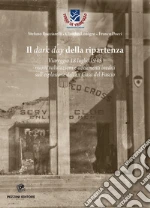 Title :
Il dark day della ripartenza. Viareggio 18 luglio 1945. Nuove valutazioni e documenti inediti sull'esplosione dell'ex Casa del Fascio
Title :
Il dark day della ripartenza. Viareggio 18 luglio 1945. Nuove valutazioni e documenti inediti sull'esplosione dell'ex Casa del FascioAuthor: Bucciarelli Stefano; Lonigro Claudio; Pocci Franco Publisher: Pezzini € 12,00
|
|
|
1915 |
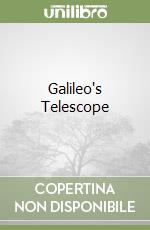 Title :
Galileo's Telescope
Title :
Galileo's TelescopeAuthor: Bucciantini Massimo, Camerota Michele, Giudice Franco, Bolton Catherine (TRN) Publisher: Harvard Univ Pr Between 1608 and 1610 the canopy of the night sky changed forever, ripped open by an object created almost by accident: a cylinder with lenses at both ends.Galileo’s Telescope tells the story of how an ingenious optical device evolved from a toy-like curiosity into a precision scientific instrument, all in a few years. In transcending the limits of human vision, the telescope transformed humanity’s view of itself and knowledge of the cosmos. Galileo plays a leading—but by no means solo—part in this riveting tale. He shares the stage with mathematicians, astronomers, and theologians from Paolo Sarpi to Johannes Kepler and Cardinal Bellarmine, sovereigns such as Rudolph II and James I, as well as craftsmen, courtiers, poets, and painters. Starting in the Netherlands, where a spectacle-maker created a spyglass with the modest magnifying power of three, the telescope spread like technological wildfire to Venice, Rome, Prague, Paris, London, and ultimately India and China. Galileo’s celestial discoveries—hundreds of stars previously invisible to the naked eye, lunar mountains, and moons orbiting Jupiter—were announced to the world in his revolutionary treatiseSidereus Nuncius. Combining science, politics, religion, and the arts, Galileo’s Telescope rewrites the early history of a world-shattering innovation whose visual power ultimately came to embody meanings far beyond the science of the stars. € 29,90
|
|
|
2012 |
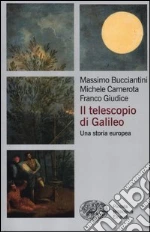 Title :
Il telescopio di Galileo. Una storia europea
Title :
Il telescopio di Galileo. Una storia europeaAuthor: Bucciantini Massimo; Camerota Michele; Giudice Franco Publisher: Einaudi Questo libro parla di un delitto. E del suo autore, a cui quel crimine costerà molto caro. Tutto accade in poco tempo, tra l'ottobre del 1608 e il gennaio del 1610, quando il cielo che si credeva di conoscere viene distrutto. Il cielo contemplato da Omero e Ovidio, da Aristotele e Tolomeo, da Dante e Tommaso d'Aquino, a un certo punto non esiste più. Anzi, ed è questa la cosa davvero terribile, non è mai esistito. E a fargli violenza, a stravolgere l'idea di rassicurante ordine che da sempre simboleggiava, è un oggetto nato quasi per scherzo, che permette di trascendere i limiti imposti dalla natura ai sensi e alla conoscenza umana. Spesso descritta in modo lineare e al limite della banalità, l'invenzione del telescopio assume qui, grazie anche alla pubblicazione di numerose lettere e documenti d'archivio inediti, i tratti di una storia più complicata e sofferta, dove in primo piano non c'è solo Galileo. Con lui, protagonisti sono matematici, astronomi, filosofi e teologi come Paolo Sarpi, Johannes Kepler e il cardinale Bellarmino, ma anche artigiani, uomini di corte, ambasciatori, nunzi pontifici e sovrani come Rodolfo II, Enrico IV e Giacomo I, insieme a poeti e artisti della levatura di John Donne e Jan Brueghel. Una storia avvincente, raccontata istante per istante, dove la potenza visiva del nuovo strumento fini per incarnare significati che andavano ben oltre la scienza degli astri. € 25,00
|
|
|
2009 |
 Title :
Pasime e Pasciò
Title :
Pasime e PasciòAuthor: Bernabucci Gianfranco Publisher: Simple € 10,00
|
|
|
2005 |
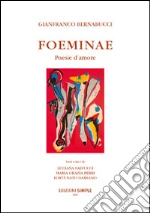 Title :
Foeminae. Poesie d'amore
Title :
Foeminae. Poesie d'amoreAuthor: Bernabucci Gianfranco Publisher: Simple € 8,00
|
|
|
2001 |
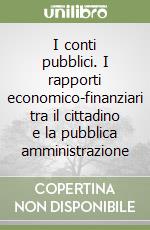 Title :
I conti pubblici. I rapporti economico-finanziari tra il cittadino e la pubblica amministrazione
Title :
I conti pubblici. I rapporti economico-finanziari tra il cittadino e la pubblica amministrazioneAuthor: Bucci Franco Publisher: Franco Angeli € 40,50
|
|
|
1992 |
 Title :
Immagini di teatto. Vicende autobiografiche
Title :
Immagini di teatto. Vicende autobiograficheAuthor: Bucci Franco Publisher: Guaraldi € 7,75
|